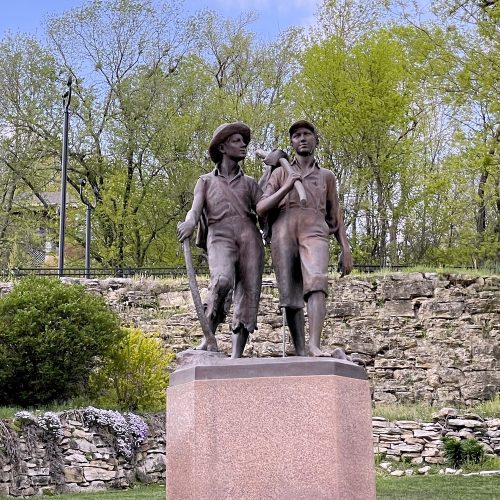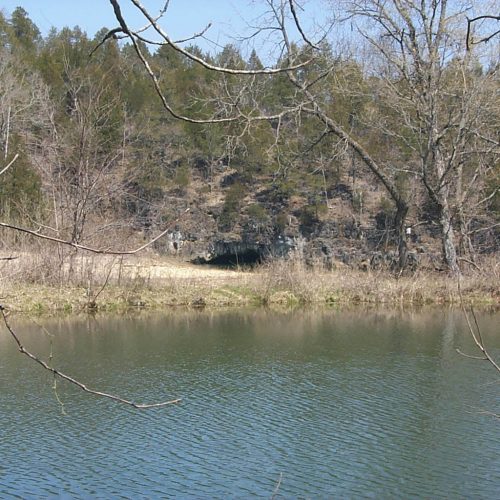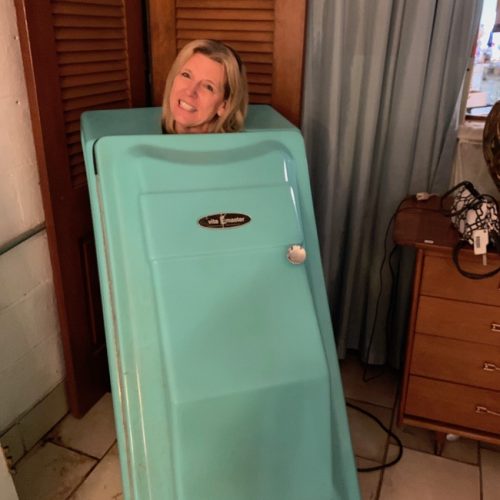We continued our 2-week European river cruise with a stop in Cologne, Germany. We arrived in port shortly after breakfast, after sailing through the night on the Rhine River from Koblenz. (Fact: The Rhine is the longest river in Germany.) Cologne holds its secrets from the past – including Roman occupation and one of the Roman Empire’s earliest churches –below the surface of its modern streets.
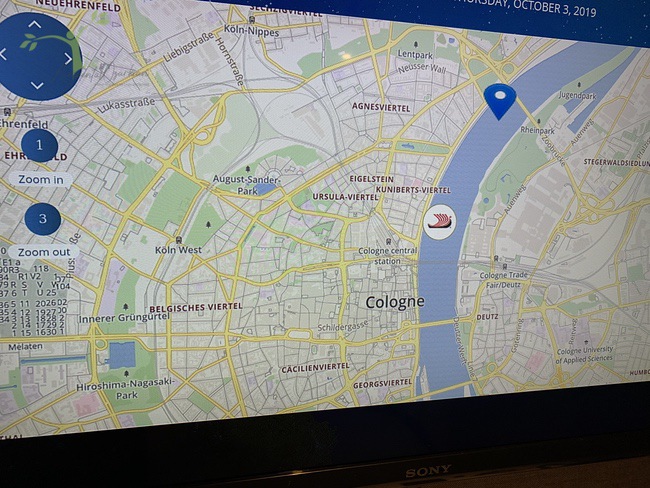
After a shuttle by coach to the city, we took a short walk on this gray day to the Gothic, 13thcentury cathedral, that miraculously didn’t get bombed during WWII.
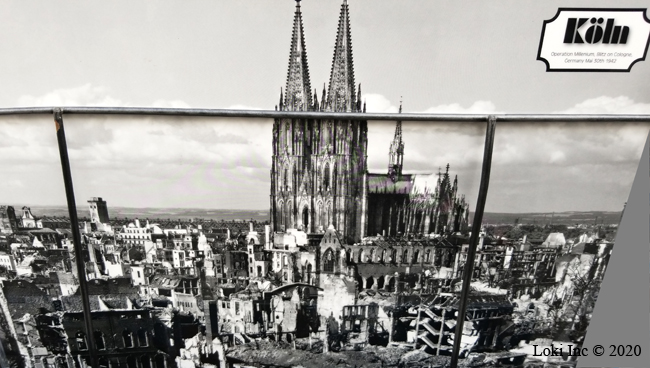
Construction on the cathedral began in 1248 and continued for 7 centuries.
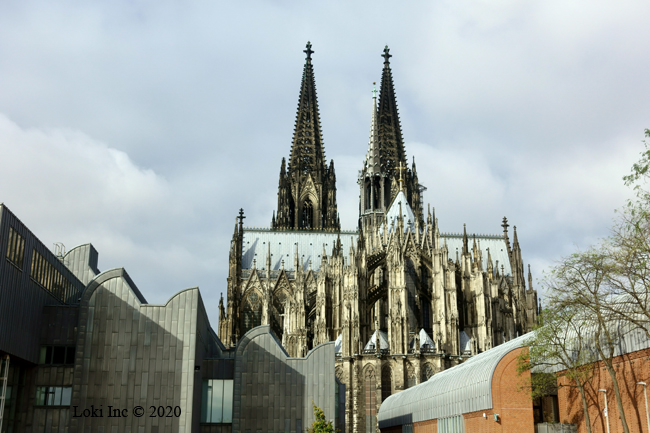
Its twin spires and gorgeous stained glass are 2 important features that impress visitors. Perhaps, though, the real reason people flock to this place is because it houses the bones of the Magi. Yes, those Magi, meaning the 3 wise men who visited Baby Jesus.
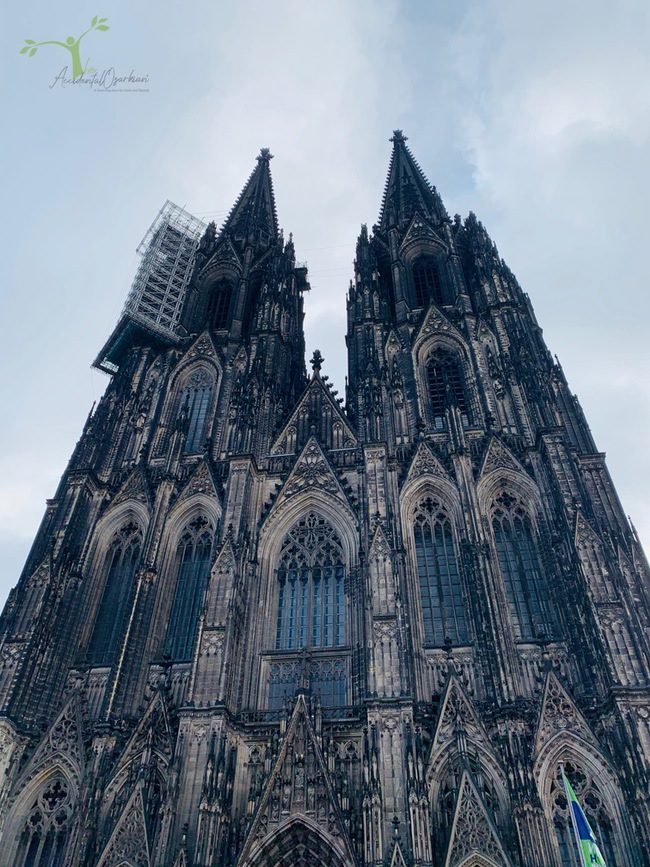 It is said that Frederick Barbarossa stole the relics, aka bones, in 1164 from a church in Milan and brought them to Cologne.
It is said that Frederick Barbarossa stole the relics, aka bones, in 1164 from a church in Milan and brought them to Cologne.
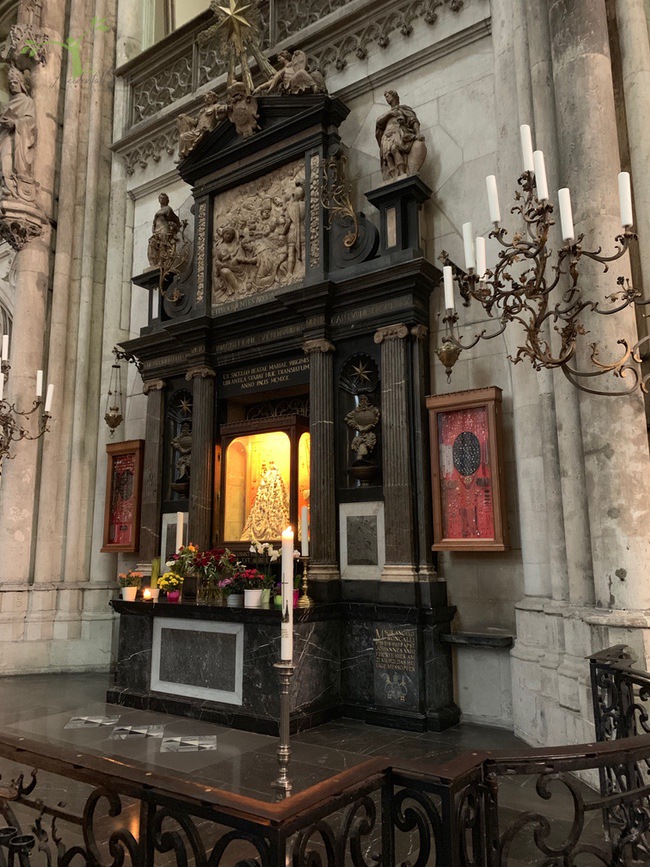
Of course, back in the day, thousands of people came to Cologne to see the relics, and so, church authorities decided to place them in a golden sarcophagus. This container also holds 3 golden crowns donated by King Otto of Brunswick in 1180. The sarcophagus stands 60 inches high, 87 inches long and 43 inches wide. Constructed of wood with gold and silver overlays, and with decorations of more than a thousand jewels and beads, the opulent shrine ranks as the largest of its type in the Western world. It is purported to be the reason that the Catholic church built (and funded) this cathedral. Today, the shrine is located behind the main altar in the cathedral.
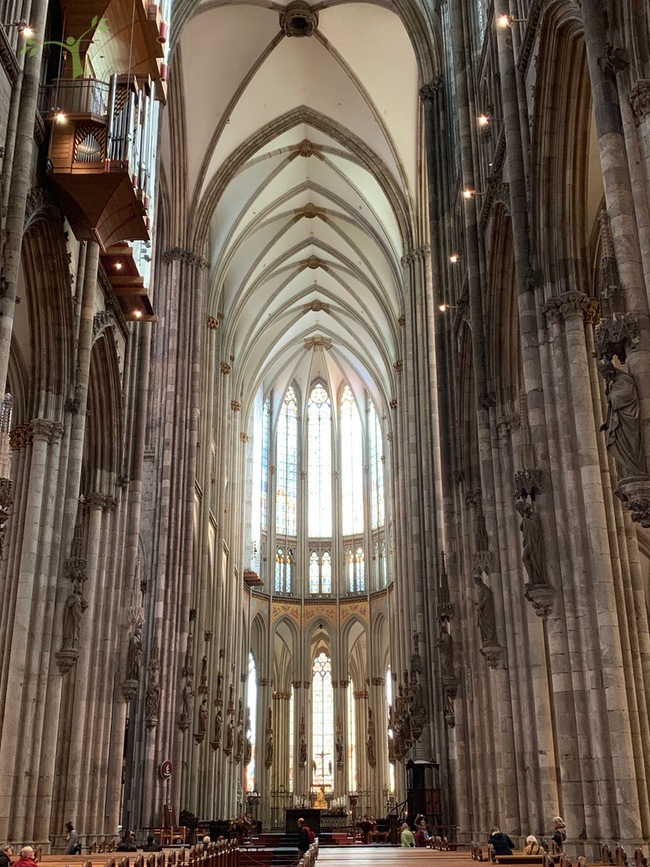
If you head down to the basement of the cathedral, you’ll see discoveries by archaeologists called “the nucleus of one of the earliest Christian communities in the northern part of the Roman Empire. Extensive remains of the Old Cathedral and an even older church have been discovered.” (from https://museenkoeln.de/portal/themes-Legacy-of-the-Romans)
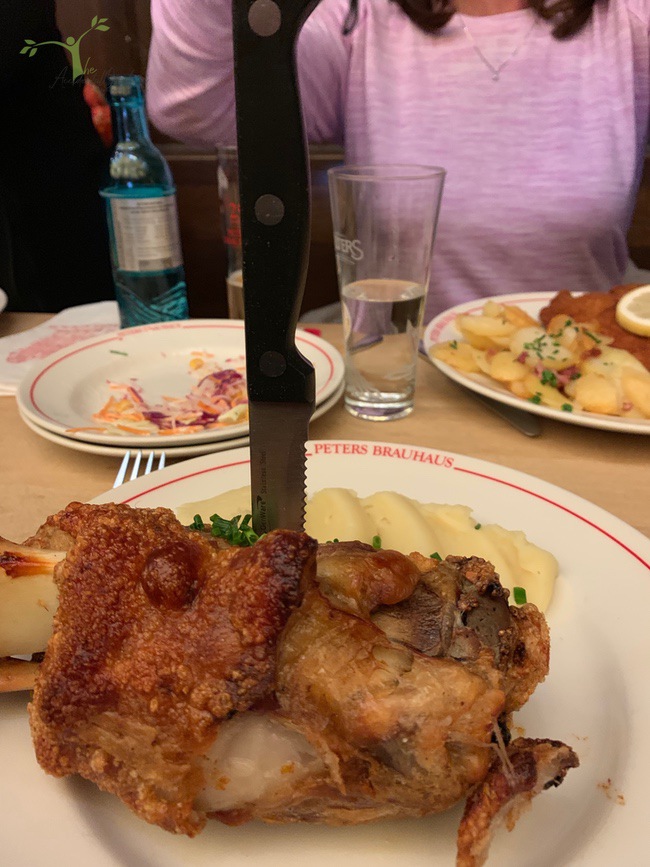
After an hour in the cathedral, the basement and a complete walk-around to see the various gargoyles, we struck off with friends for lunch.
When in Cologne, eat the pork knuckle.
And I tried it at Peters Brauhaus. Delicious, crispy and served with scalloped potatoes.
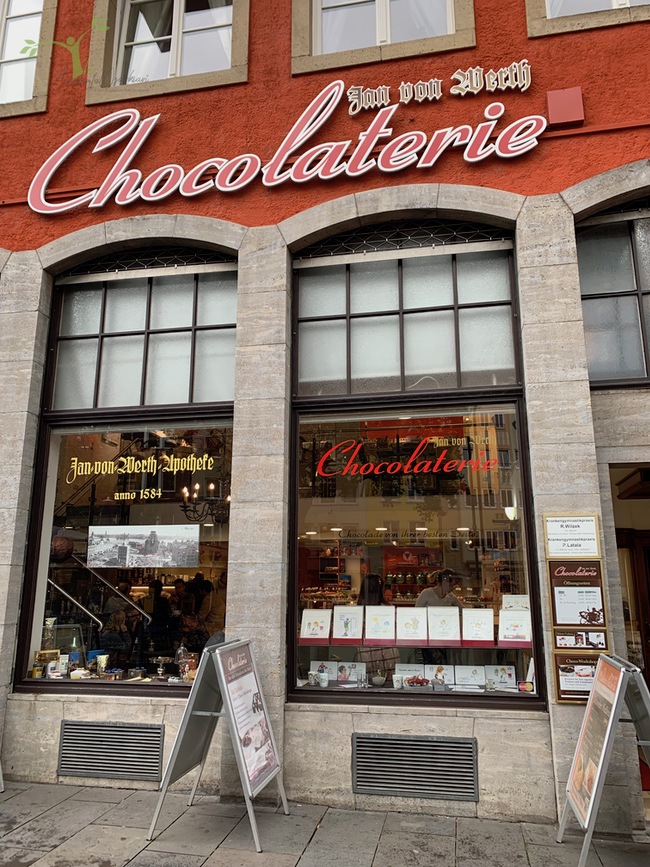 We also stopped by the chocolaterie, to purchase exquisite chocolate and to admire the beautifully formed candies.
We also stopped by the chocolaterie, to purchase exquisite chocolate and to admire the beautifully formed candies.
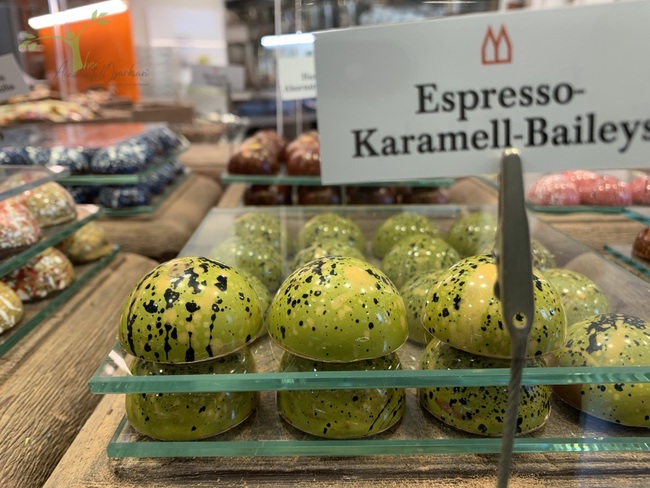
The Romans
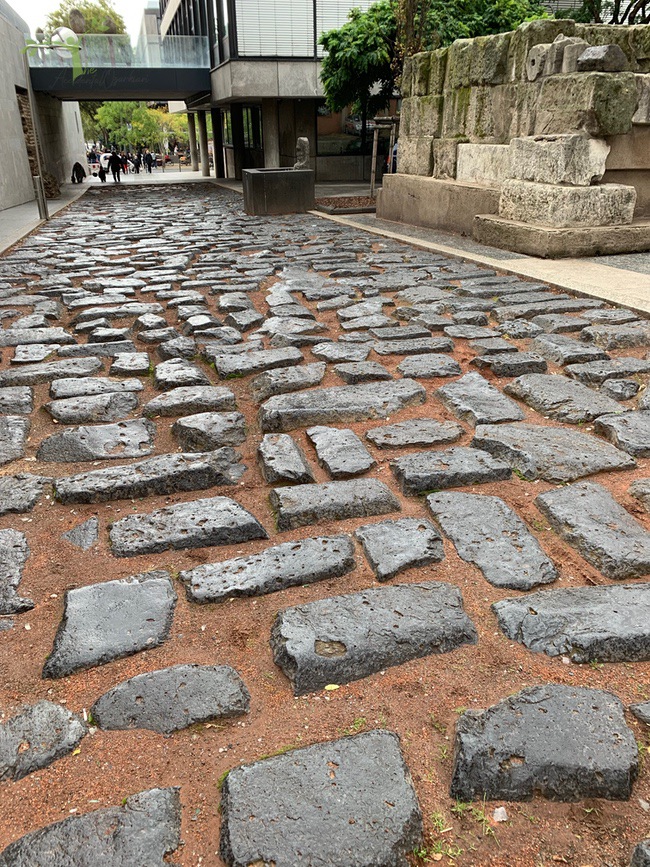
We decided to walk more to burn off some of the pork and chocolate (and to be honest, beer), and discovered a few places where the Romans had been. Rome founded a colony here in 38 BC. When Emperor Claudius’s wife, who hailed from this part of the country, Agrippina, convinced him to elevate its standing to that of a city (around 50 AD), he named it Colonia Claudia Ara Agrippinensium – which throughout the years became Colonia and then, Cologne.
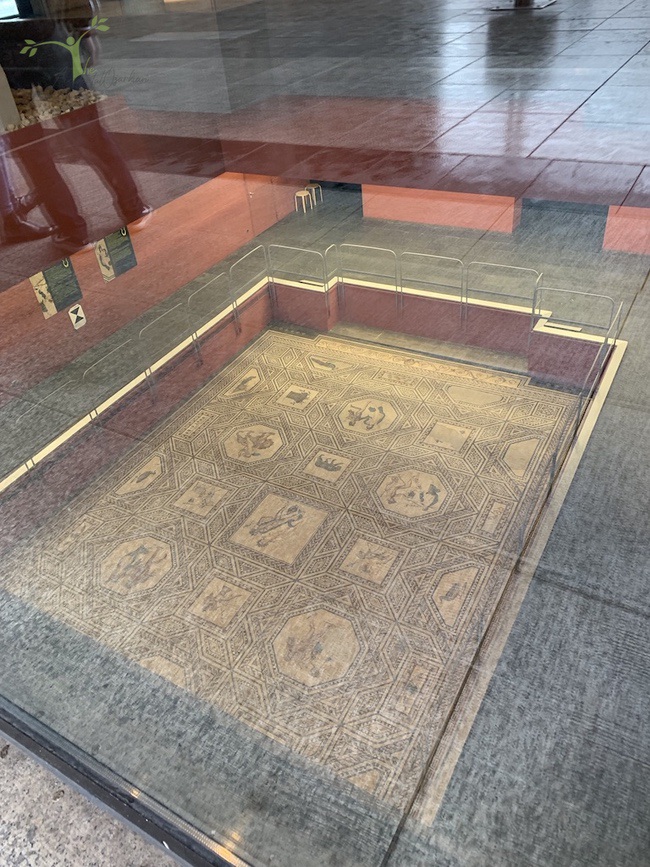
The Romans, renowned for their love of baths, sewers and aqueducts, left evidence of their inhabitation in the city – unearthed throughout the years during various modern construction projects. For example, the lovely bath house lies near the city center and you can see evidence of its artistic tile work in the photo above.
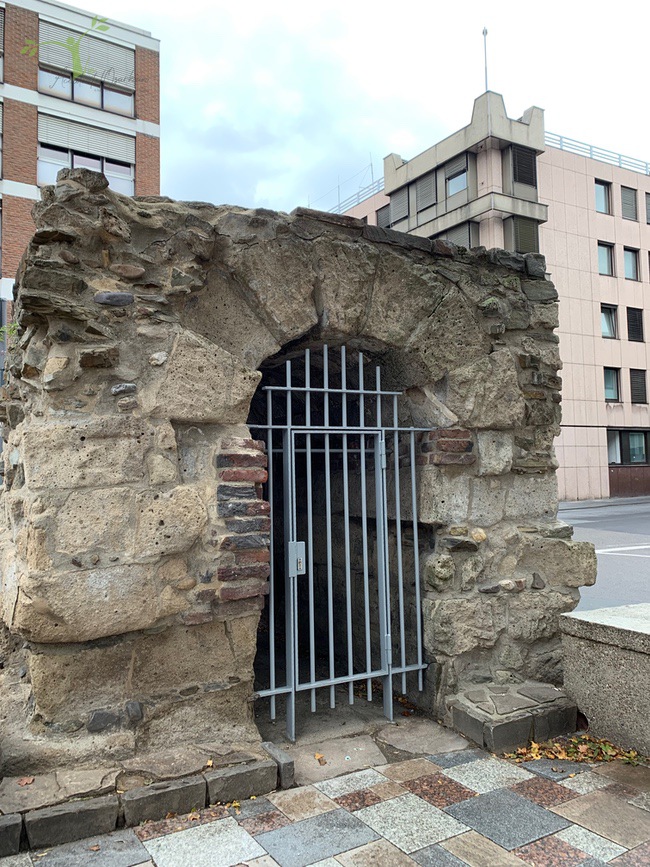
We also found evidence of a sewer and walked on Roman cobblestones. If we’d had more time, we would have been able to further explore the Roman history entwined in this city. I am always fascinated by Roman history, and in particular, its evolved state as compared to the civilizations it conquered and/or lived amidst.
However, as we had started later in the morning, and taken in quite a lot of the city already, we headed back to the ship for another delicious dinner onboard and an evening of bingo, live music and an evening in the lounge of the ship Skadi with newfound friends.
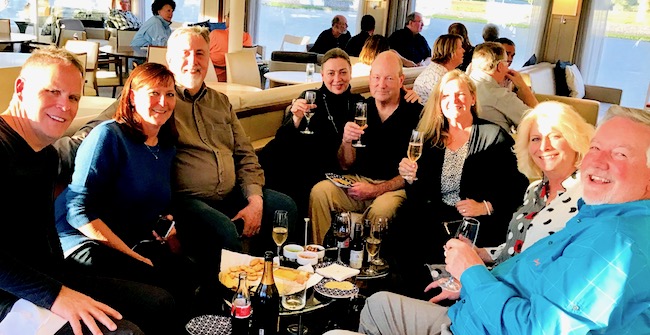
Our next stop would be our last stop – Kinderdijk, in The Netherlands.
Learn more about Viking River Cruises. Note: Viking River Cruises did not underwrite the cost of this trip at all.

